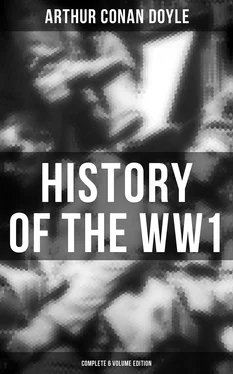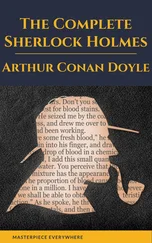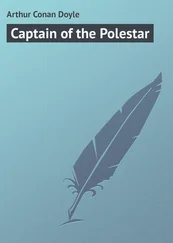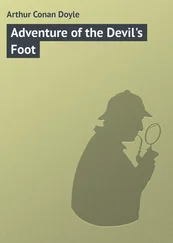When the First Division at the centre of the British line were driven in, as already described, and the Seventh Division were pushed back into the woods, the situation became most critical, for there was a general retirement, with a victorious enemy pressing swiftly on upon the British centre. The men behaved splendidly, and the officers kept their heads, taking every opportunity to form up a new line. The 2nd Rifles and 1st North Lancashires in immediate support of the centre did all that men could to hold it firm. The German artillery lengthened their range as the British fell back, and the infantry, with their murderous quick-firers scattered thickly in the front line, came rapidly on. Communications were difficult, and everything for a time was chaos and confusion. It looked for an hour or two as if Von Deimling, the German leader, might really carry out his War Lord’s command and break his road to the sea. It was one of the decisive moments of the world’s history, for if the Germans at that period had seized the Channel ports, it is difficult to say how disastrous the result might have been both to France and to the British Empire. At that moment of darkness and doubt a fresh misfortune, which might well have proved overwhelming, came upon the hard-pressed forces. About 1:30 a shell exploded in the headquarters at the château of Hooge, and both General Lomax, of the First Division, and General Munro, of the Second, were put out of action, the first being wounded and the second rendered unconscious by the shock. It was a brain injury to the Army, and a desperately serious one, for besides the two divisional commanders the single shell had killed or wounded Colonels Kerr and Perceval, Major Paley, Captains 0mmany and Trench, and Lieutenant Giffard. General Landon, of the 3rd Brigade, took the command of the First Division at a moment’s notice, and the battle went forward. A line was hurriedly formed, men digging as for their lives, whilst broken units threw themselves down to hold off the rolling grey wave that thundered behind. The new position was three-quarters of a mile back and about four hundred yards in advance of Veldhoek, which is the next village down the Ypres road. The Seventh Division had also been rolled back, but the fiery Capper, their divisional chief, who has been described as a British Samurai, was everywhere among his regiments, reforming and bracing them.
The British soldiers, with their incomparable regimental officers, rose to the crisis, whilst General Haig was behind the line at Hooge, directing and controlling, like a great engineer who seeks to hold a dam which carries an overpowering head of water. By three o’clock the new line was firmly held.
Now General Haig, seeking round for some means of making a counter-attack, perceived that on his left flank he had some reserve troops who had been somewhat clear of the storm and might be employed. The 2nd Worcesters were ordered to advance upon Gheluvelt, the initiative in this vital movement coming from General FitzClarence of the 1st Brigade. On that flank the troops had not joined in the retirement, and, including the South Wales Borderers of the 3rd Brigade, were still in their original trenches, being just north of the swathe that had been cut in the British line, and just south of where the Second Division, extended to cracking point, with one man often for every eight or nine feet, and no supports, were defending the left flank of the Army.
When the village of Gheluvelt and the trenches to the north of it had been captured by the enemy, a gap had been left of about five hundred yards between the northern edge of the village and these South Wales Borderers. This gap the 2nd Worcesters were ordered to fill. They were in reserve at the time in the south-west corner of the Polygon Wood, but on being called upon they made a brilliant advance under Major Hankey. One company (A) was detached to guard the right flank of the advance. The other three companies came on for a thousand yards. At one point they had to cross two hundred and twenty yards of open under heavy shrapnel-fire. One hundred men fell, but the momentum of the charge was never diminished. Their rapid and accurate fire drove back the German infantry, while their open order formation diminished their own losses. Finally they dashed into the trenches and connected up the village with the line of the Welsh Borderers. Their right platoons, under Captain Williams, held the village until nearly midnight. Altogether the advance cost the battalion 187 casualties, including 3 officers, out of 550 who were in the ranks that day. Up to dusk the Worcesters were exposed to heavy shrapnel fire, and small detached parties of the enemy came round their right flank, but their position was strengthened and strongly held until the final readjustment of the line. It was a fine advance at a critical moment, and did much to save the situation. The whole movement was strongly supported by the guns of the 42nd Battery, and by some of the 1st Scots Guards upon the left of the Welsh Borderers.
It has been stated that a line had been formed near Veldhoek, but this difficult operation was not performed in an instant, and was rather the final equilibrium established after a succession of oscillations. The British were worn to a shadow. The 2nd Queen’s had 2 officers and 60 men left that night, the 2nd Welsh had 3 officers and 93 men. Little groups, who might have been fitted into a large-sized drawing-room, were settling a contention upon which the fate of the world might depend. But the Germans also had spent all their force. The rattle of musketry behind their advance was enough to tell them that the British were still in their trenches, and the guns were for ever playing on them with deadly effect. Gradually they began to dissolve away among the thick woods which flank the road. They were learning that to penetrate the line of a resolute adversary is not necessarily the prelude to victory. It may mean that the farther you advance the more your flanks are exposed. So it was now, when the infantry to the north on one side and the Third Cavalry Division on the other were closing in on them. That long tentacle which was pushing its way towards Ypres had to be swiftly withdrawn once more, and withdrawn under a heavy fire from the 29th, 41st, and 45th field batteries.
The Scattered German infantry who had taken refuge in the woods of Hooge, which lie to the south of the road, were followed up by mounted and dismounted men of the Royals, 10th Hussars, and 3rd Dragoon Guards, aided by some French cavalry. These troops advanced through the woods, killing or taking a number of the enemy. By nightfall the Germans had fallen back along the whole debated line; the various British units, though much disorganised, were in close touch with each other, and the original trenches had in the main been occupied, the Berkshire Regiment helping to close the gap in the centre. The flood had slowly ebbed away, and the shaken barrier was steady once more, thanks to the master-hands which had so skilfully held it firm. The village of Gheluvelt remained in the hands of the Germans, but the British trenches were formed to the west of it, and the road to the sea was barred as effectually as ever. These are the main, facts of the action of Gheluvelt, which may well be given a name of its own, though it was only one supremely important episode in that huge contention which will be known as the First Battle of Ypres.
In the southern portion of the Ypres area at Klein Zillebeke a very sharp engagement was going on, which swung and swayed with as much violence and change as the main battle on the Menin road. The German attack here was hardly inferior in intensity to that in the north. Having pushed back Lawford’s weak brigade (22nd) it struck full upon part of Bulfin’s 2nd Brigade, which had been detached from the First Division and sent to cover the right of the Seventh Division. Its own flank was now exposed, and its situation for a time was critical. The German advance was sudden and impetuous, coming through a wood which brought the dense mass of the enemy’s leading formation almost unseen right up to the British line. The position of the 2nd Brigade was pierced, and the two regiments present, the 2nd Sussex and the 1st Northamptons, were driven back with loss. Their brigadier rallied them some hundreds of yards to the rear, where they formed up into a skirmish line in the open, and, though unable to advance, kept back the Germans with their rifle-fire. The losses still continued, however, and the enemy came on again and again with numbers which seemed inexhaustible. Suddenly there was a charging yell from behind a low slope covering the rear, and over the brow there appeared some three hundred survivors of the 2nd Gordons, rushing at full speed with fixed bayonets. At the same moment the dismounted troopers of the 6th Cavalry Brigade and a company of sappers ran forward to join in the charge. The whole British force was not one to three of its opponents, but as the reinforcing line swept on, cheering with all its might, the survivors of the hard-pressed brigade sprang up with a shout and the united wave burst over the Germans. Next moment they had broken and were flying for their lives through the Zwartelen Wood. The pursuit lasted for some distance, and a great number of the enemy were bayoneted, while several hundreds were taken prisoners.
Читать дальше












